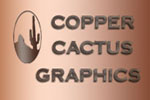Cyphernaut - Articles Revisited (German-Deutsch)
On a previous Cyphernaut guide page, the German indefinite and definite articles were discussed with some samples provided. To better illustrate the article endings for each case, this page will present new tables that will hopefully provide an improved way of memorizing the correct endings needed for each case.
To review, the four cases are:
- Nominative - standard subject
- Accusative - direct object
- Dative - indirect object
- Genitive - possessive
Indefinite articles and ein-words have the same endings. Ein-words refer to the possessive adjectives: mein, dein, sein,ihr, unser, euer, ihr and Ihr. It also includes the negative form of ein, kein. Kein basically negates a noun that would normally be preceded by an ein, i.e. Ich habe kein Geld (I have no money). Please note in the table that there are no plural forms for ein, so the plural column contains endings for kein.
Another category which will be presented here is der-words. Der-words refer to the following words, which all use the same endings:
- dieser - this, these(pl.), that, those(pl.)
- jeder - each, every
- jener - that, the one that
- mancher - many a , several (used mostly in the plural)
- solcher - such (used mostly in the plural)
- welcher - which
The last table is a mnemonic table intended to make it easier to memorize these endings. Since definite articles, indefinite articles, ein-words and der-words have similar endings, a pattern emerges using by just using the last letter, which is shown in the table. The only exceptions are that there are no endings for ein in the nominative case for masculine and neuter nouns and no endings for ein in the accusative case for neuter nouns. This is shown in the table with an x. The table cells also color coded according to the ending to aid in the memorization process. Then the hard part becomes knowing the correct gender of the noun.
Abbreviations used in the table are:
- M for masculine
- F for feminine
- N for neutral
- PL for plural
| Definite Articles | ||||
|---|---|---|---|---|
| Case | M | N | F | PL |
| Nominative | der | das | die | die |
| Accusative | den | das | die | die |
| Dative | dem | dem | der | den |
| Genitive | des | des | der | der |
| Indefinite Articles or Ein-words | ||||
|---|---|---|---|---|
| Case | M | N | F | PL |
| Nominative | ein | ein | eine | keine |
| Accusative | einen | ein | eine | keine |
| Dative | einem | einem | einer | keinen |
| Genitive | eines | eines | einer | keiner |
| Der-words | ||||
|---|---|---|---|---|
| Case | M | N | F | PL |
| Nominative | dieser | dieses | diese | diese |
| Accusative | diesen | dieses | diese | diese |
| Dative | diesem | diesem | dieser | diesen |
| Genitive | dieses | dieses | dieser | dieser |
| Ending Pattern for Definite Articles, Indefinite Articles, Ein-words or Der-words | ||||
|---|---|---|---|---|
| Case | M | N | F | PL |
| Nominative | r/x(ein) | s/x(ein) | e | e |
| Accusative | n | s/x(ein) | e | e |
| Dative | m | m | r | n |
| Genitive | s | s | r | r |





